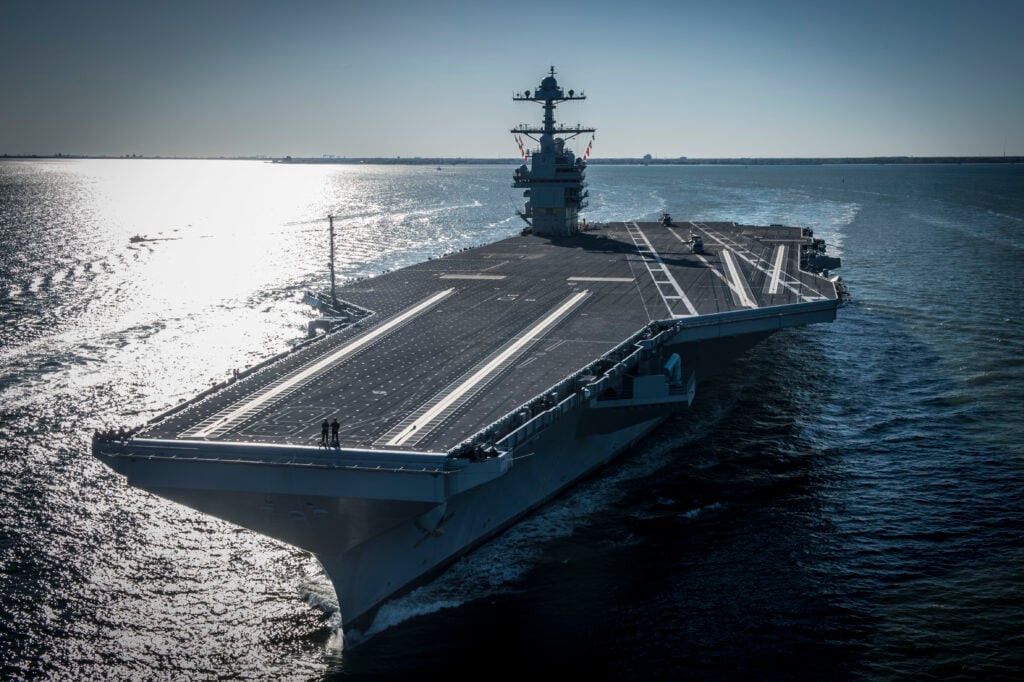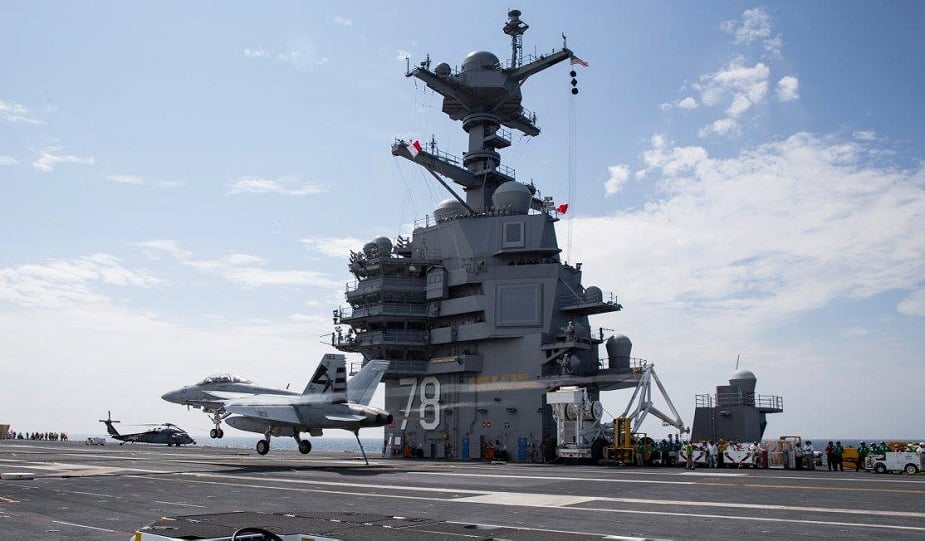
USS Gerald Ford
SOMEWHERE OFF THE EAST COAST: When our aging C-2 Greyhound aircraft took off from the USS Gerald R. Ford the experience was clearly different. Propelled by the electro-magnetic system that has replaced steam catapults it was much smoother and much quicker.
The new launch and landing systems provide key tools for a significant reshaping of the operational tempo for the large deck carrier.
The new launch system allows for a wider range of aircraft to operate from the carrier; the new arresting gear system can recover them. The ability to mix and match the current air fleet and the future one is significantly enhanced with EMALS, which will allow everything from F-35s to the fleet’s future unmanned aircraft to take off and land aboard the new class of carriers.
The same flexibility exists in the Advanced Arresting Gear with larger current operating wind and weight envelopes and the ability to recover future aircraft designs with minimal modifications required.
The speed of launch and recovery was on full display during our Nov. 17 visit. Currently, the Ford has two-third of its air wings on board, with two air wings and four squadrons operating from the deck. The carrier is at sea currently working what the US Navy calls cyclic operations, where strike packages are launched in clusters and then operate in the combat space to provide for the various missions done by the Navy at sea. Normally, at this stage in the certification of a new carrier, cyclic operations would not be performed.
The launch and recovery systems are just one example of the changes from the Nimitz Class to the Ford class.
A key change is with how weapons move from the lower decks of the shop to aircraft. On a Nimitz class carrier, a “weapons farm” on the ship’s flight deck is where they are staged for assembly and worked with components brought from various levels of the ship and then transported by a hydraulic system which pulls the elevator up with wires and ropes. The weapons need to be moved through one of the two mess decks before being transported on deck. And prior to loading the weapons onto the aircraft, there is the challenge of finishing the weapons preparation prior to weapons loading.
This process changes onboard the Ford.

USS Gerald R. Ford CVN 78 practices launches and recoveries
Below the flight deck are two very large weapons assembly and loading areas, where the weapons are readied for transportation to the flight deck for loading onto aircraft. These two large areas allow the ordinance team to prepare weapons of various complexity out of the weather, which makes the process much more rapid and safer.
It is clear the new carrier will be able to support multi-mission operations. There is enhanced capability for the crew to build weapons packages below deck and transport them rapidly to the flight deck. This will give the ship the ability to mix and match flight strike packages or ISR packages much more rapidly.
“We can move more weapons in a safer way, a faster way to a flight deck that is larger and more flexible. And that all contributes to the kind of agility, lethality, and flexibility the Ford brings to the fight,” Rear Adm. Clapperton, Commander Strike Group 12, told us.
The Ford’s flight deck differs substantially from those of the Nimitz class. The island has been moved 140 feet aft and is 30% smaller. This allows significant additional space for aircraft refueling and weapons loading operations, with the area forward of the island able to accommodate more combat aircraft. During flight operations, Ford’s design increases the amount of usable space forward of the island and reduces the amount unusable space aft.
Another example is the refueling system, designed to keep a clear path to the catapult by reducing flight deck obstructions caused by refueling hoses, weapons skids and weapons elevator access points. This allows the Ford to sustain higher launch and recovery rates. The in-deck refueling stations keep the Ford’s refueling hoses out of the taxi paths to the catapult.
This has a major impact because, on the Nimitz, the refueling crew has to carry several, heavy and long fuel hoses from the starboard side of the Nimitz class to do mid-deck refueling. On the Ford, the hoses are right beside the in-deck refueling stations and rather than having to have a crew of 5 people to bring the hoses 150 feet to mid-deck and do refueling, you only need two crew to man the in-deck refueling stations.
Last month, I spent two days with the senior leadership of the Ford and talked with many members of the crew. What I had a chance to see and discuss during that visit was the new combat architecture built into the ship which allows for a very different workflow than a Nimitz class carrier, which allows for significant advances in sortie generation rates, as well as new ways to manage the deck space in empowering air operations from the very formidable warship.
A crucial aspect of the Ford are the C2 capabilities and roles of the carrier, which I observed in October but not on this visit. The mission operations areas are much larger than on the Nimitiz and are being configured for the kinds of information warfare as well maritime distributed operations which the new carrier will execute at greater distance in blue water maneuver warfare operations.
But what was on the ship at sea, and not visible during the October visit, were the full complement of warfare officers, bringing the various warfare competencies to the command deck. One notable member was the commander of an Aegis destroyer, as Aegis will have a combat officer onboard the Ford working the various ways Aegis and the carrier will work together in the blue water maneuver space.
This is not simply a new carrier; this is a whole re-imaging of the large deck carrier being introduced into the new strategic situation and shaping new combat capabilities with the fleet, the joint services, notably the USAF and with coalition partners. The Ford class is so different that Ed Timperlake and I are writing a book for USNI Press: entitled the Maritime Kill Web, 21st Century Warfighting and Deterrence.
Robbin Laird, a member of the Breaking Defense Board of Contributors, is owner of the Second Line of Defense website, and is a defense consultant.






















